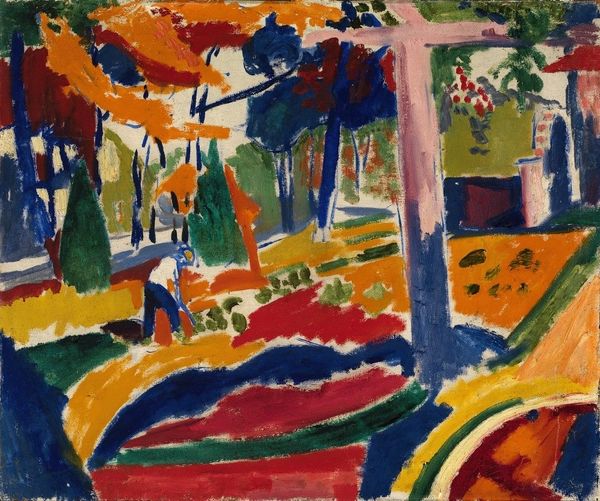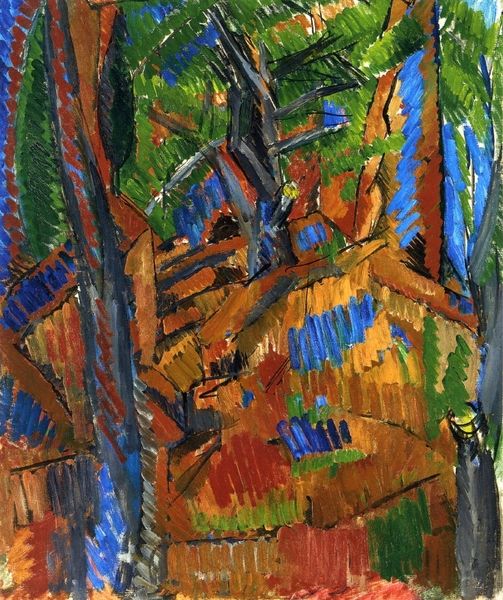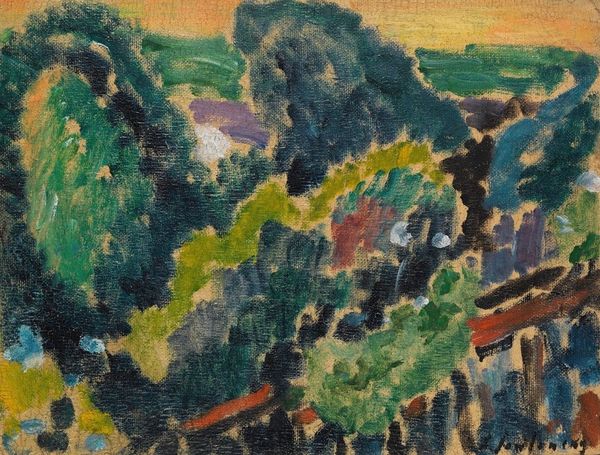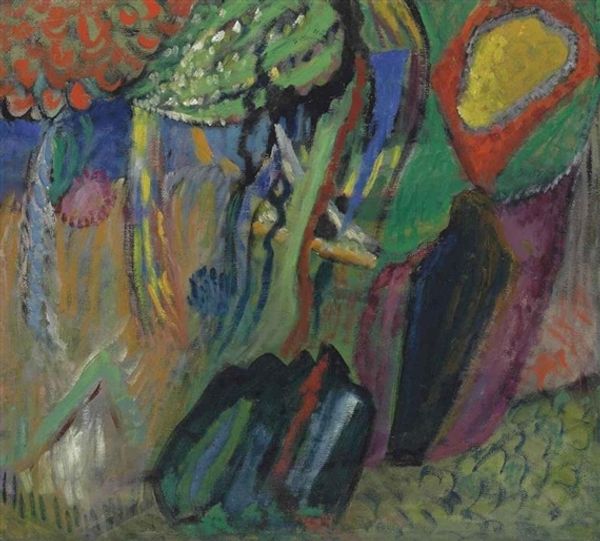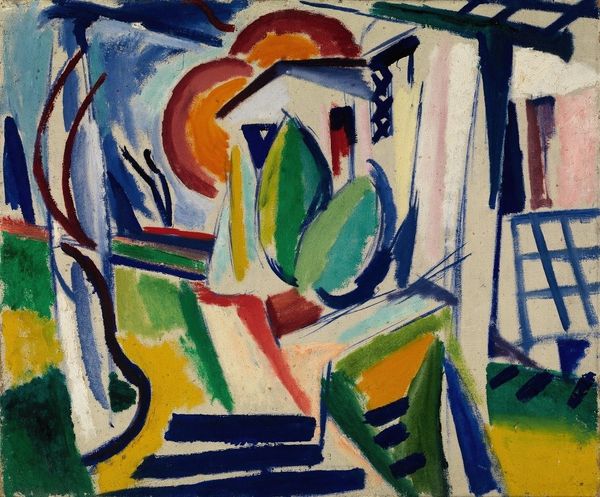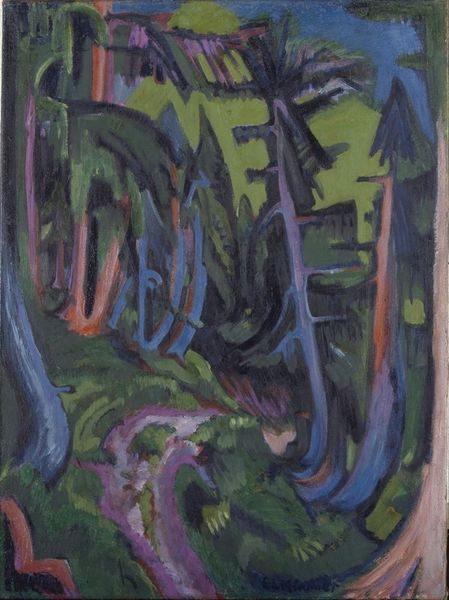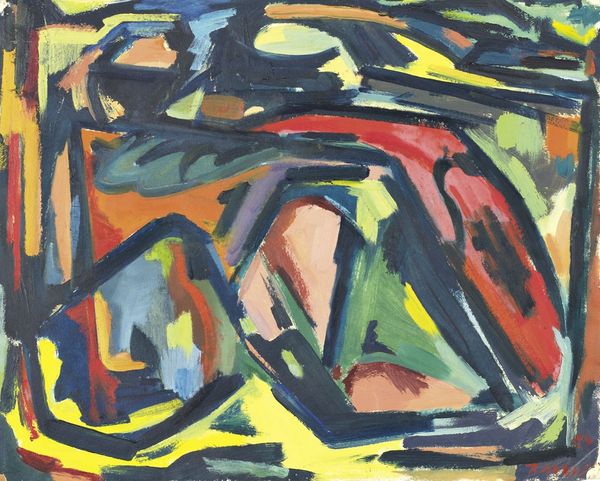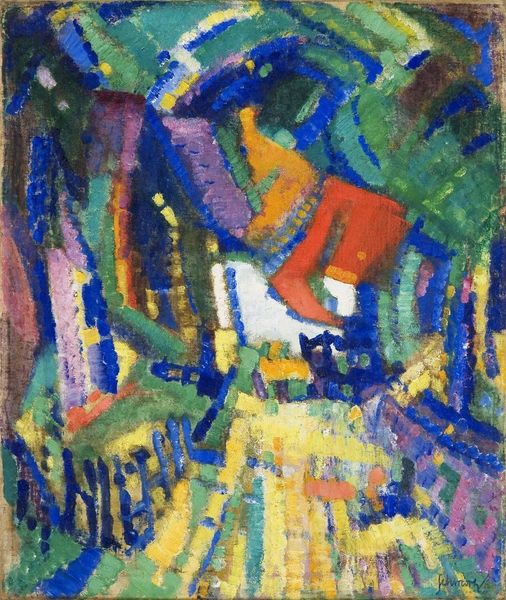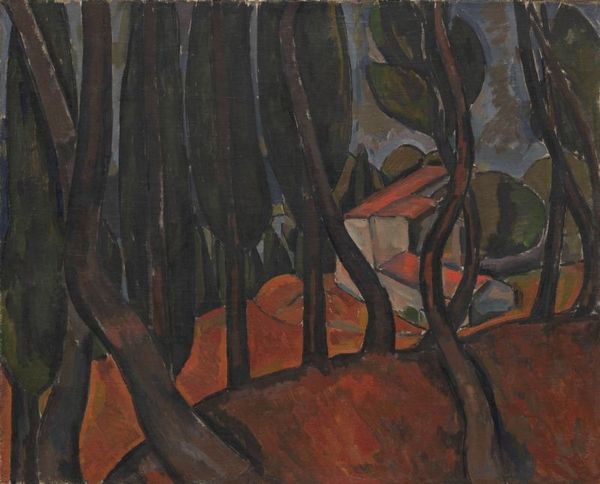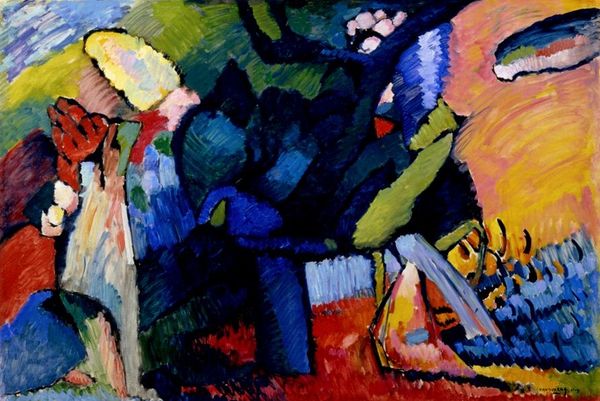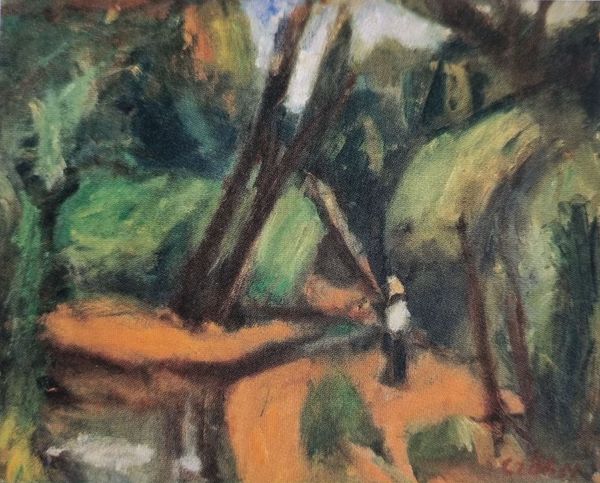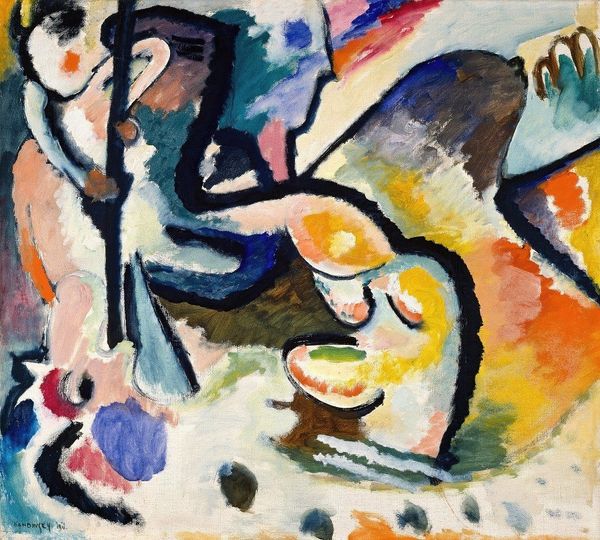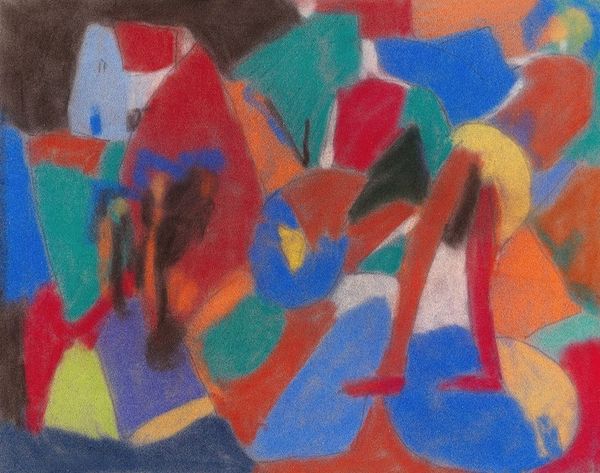
#
abstract expressionism
#
abstract painting
#
fauvism
#
landscape
#
fluid art
#
neo expressionist
#
acrylic on canvas
#
paint stroke
#
abstract art
#
expressionist
#
swirly brushstroke
Copyright: Public Domain: Artvee
Curator: Marsden Hartley's "Red Tree," painted in 1910, leaps out with its vibrant, almost violent brushstrokes. What's your first reaction to this expressive landscape? Editor: There's a rawness to it, isn't there? A feeling of untamed emotion. It strikes me as a landscape less about natural representation and more about internal projection. There's a social dimension too – this Expressionistic style rejected industrial values in favor of subjective and authentic experience. Curator: Exactly! You see how Hartley deploys thick layers of oil paint? Notice the almost sculptural quality in the application? He’s working through a material language—viscosity, layering, even the sourcing of the pigments—to convey the force of his vision. This wasn't just painting a tree; it was a performance of painting itself. Editor: Absolutely. The materials themselves carry cultural weight, don’t they? Considering Hartley’s position as a gay man in a period of intense social constraints adds another layer. Is it possible that this intensity of color, this seeming disregard for the established landscape tradition, are both a form of defiant self-expression? A commentary on what was deemed "acceptable?" Curator: I think that's incredibly insightful. Think about the physicality required to build up those surfaces. It is evident how labor informs content; here, art's status as a commodity is secondary to its role as an active, tangible thing born from intense material engagement. Editor: This also moves it from being just pretty to profound. Placing art within broader social structures like gender and identity gives the material choices inherent meaning and demonstrates the emotional complexities present here, a window into his soul and the collective struggle against prescribed societal boundaries. It turns 'nature' into a highly politicized and personal stage. Curator: It shows that even a seemingly simple subject, a "tree," can be an intensely complex repository of meaning. Editor: Precisely, seeing the landscape here through the lens of identity and power unveils a deeply radical element of early Modernism.
Comments
No comments
Be the first to comment and join the conversation on the ultimate creative platform.
